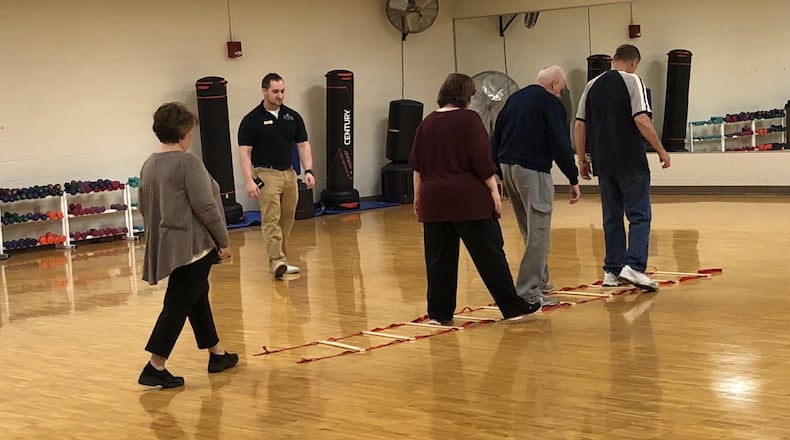“Panic,” Lawrence said. “I know there is no cure and I was a single woman, living alone. I didn’t want to lose my independence.”
In the months that followed, the 62-year-old’s panic has subsided and been replaced by hope and a newfound confidence. That change is due, in part, to Lawrence’s participation in the Parkinson’s Circuit Class at the Kettering Recreation Complex. The class is tailored to individuals living with the neurodegenerative disorder.
“My tremors are down and I feel more secure,” Lawrence said. “I even climbed a ladder the other day.”
Understanding Parkinson’s
Parkinson’s symptoms generally develop slowly over time and can include tremor, limb rigidity, slowness of movement and gait and balance problems. While Parkinson’s is not fatal, the Centers for Disease Control and Prevention rated complications from the disease as the 14th leading cause of death in this country.
March Madness: The 2 times Wright State went dancing in the NCAA tournament
“I couldn’t write or type, the tremors were that bad,” Sultana Purpora, of Kettering said. “I couldn’t walk through Elder-Beerman or Macy’s.”
There is no cure, but there are a variety of treatment options including medications. And research has shown that exercise can improve gait, balance, tremor, flexibility, grip strength and motor coordination.
“My daughter is just amazed by how much this class has helped me,” Purpora said. “The last time I saw her she said, ‘Oh my God, you’re back.’”
Exercise component
The Parkinson’s Outcome Project examined the physical and potential neuroprotective effects of exercise for those with Parkinson’s and found significant short- and long-term benefits for those in all stages of the disease.
One study showed that people who exercised regularly for 2.5 hours a week, had a smaller decline in mobility and quality of life over a two-year period. Exercise programs can positively affect strength, balance, coordination, flexibility and endurance.
But it isn’t just the physical components that Nick Suman, a fitness specialist and group exercise instructor at the Kettering Recreation Complex, is impressed by.
DID YOU KNOW? Here’s the latest on our local ‘Survivor’ contestant
“I like the idea of empowering people to be in charge of their own rehabilitation,” Suman said. “Essentially it gives you the power to help yourself.”
Better sleep, less stress, more energy and higher self-esteem have also been associated with exercise for individuals with Parkinson’s disease.
Give it a try
The Parkinson’s Circuit Class is designed for all ability levels as adaptations can be made for those in various stages of the disease.
From a walking warm-up to exercises designed to utilize both small and large motor movement to punching drills – complete with gloves – and TRX training, participants get in a full workout.
And it works.
“I will not miss this class,” Purpora said. “I wish it was four or five days a week, I’d be here for every one of them.”
Exercise Benefits for People with Parkinson’s
(From the Parkinson’s Foundation)
· Engaging in any level of physical activity is beneficial, rather than being sedentary — this is associated with improved motor symptoms.
· For people with mild to moderate Parkinson’s, targeted exercises can address specific symptoms for example: aerobic exercise improves fitness, walking exercises assist in gait, resistance training strengthens muscles. One study showed that twice-a-week tango dancing classes helped people with Parkinson’s improve motor symptoms, balance and walking speed.
· Exercise may also improve cognition, depression and fatigue, but the research is still ongoing in these areas.
Parkinson’s Circuit Class
WHAT: Specialized drop-in exercise program tailored to individuals living with Parkinson's disease
WHEN: Tuesday and Thursdays, 11:30 a.m.
WHERE: Kettering Recreation Complex, Studio B
COST: $5 Kettering residents, $10 nonresidents and exercise passes can be used
MORE INFO: www.playkettering.org/
About the Author

